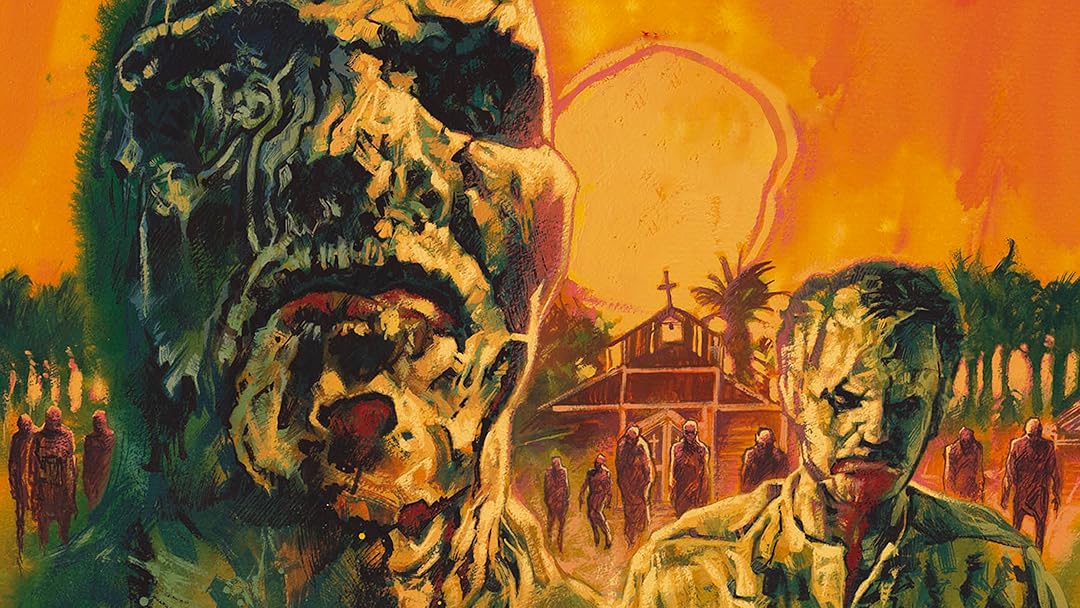Masterpiece Theater returns to Last Movie Outpost as DwC takes us on another critical examination of an overlooked or misunderstood classic. He will find the hidden depths for you. This time around, an Italian splatter classic. The subject of a UK “Video Nasty” moral panic, the many-named Zombie AKA Zombi 2 AKA Zombie Flesh Eaters.
Yes… that movie. If you know it, you know it.
Zombie
Directed by Italian legend Lucio Fulci, written by Dardano Sacchetti, and Elisa Briganti. Starring Tisa Farrow, Ian McCulloch, and Richard Johnson. This analysis will contain spoilers.
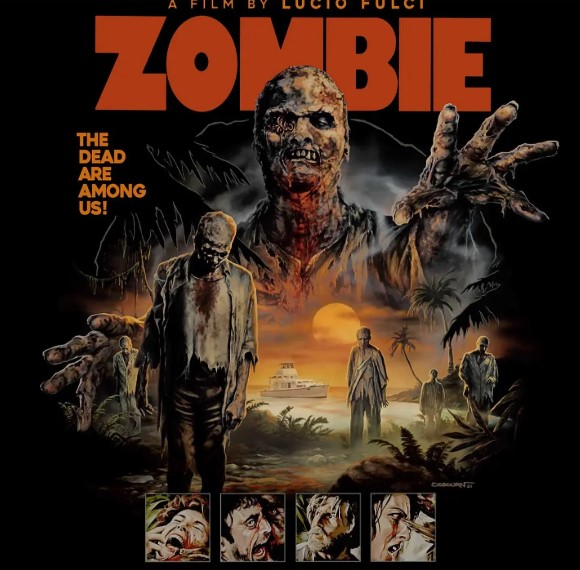
When a sailboat adrift in New York City’s harbor nearly collides with the Staten Island Ferry, the NYPD Harbor Patrol is dispatched to investigate. During their search of the craft, two officers are attacked by a hulking man hiding in the bow.
One officer is killed, and the other shoots the attacker, who falls into the Hudson River. A letter addressed to the daughter of the boat’s owner is found on the vessel and details an illness he contracted while conducting medical research on the island of Matul. Hoping to find her father, she teams up with a reporter and they travel to St. Thomas, where they catch a boat ride with a couple on a Caribbean tour.
The four of them sail to Matul, where they meet a doctor trying to find a cure for the mysterious disease that is reanimating the island’s dead. As zombies overrun Matul, the survivors must fend off the living dead and find a way to escape the island.
“The boat can leave now. Tell the crew.”
With those words, a new era of cinema began. Although there had been some Italian horror films that found international success before, nothing could compare to what would follow in the aftermath of Lucio Fulci’s Zombie. A decade of film, unlike anything the world had ever seen, was about to commence. But how?
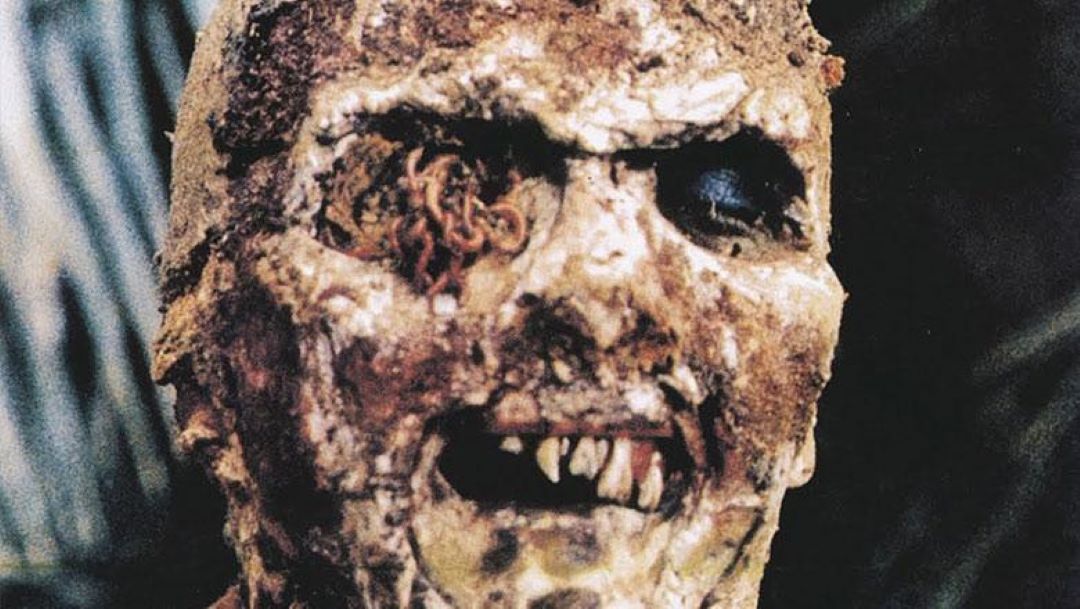
What dragon’s teeth were sown that gave rise to these monumentally important films? Well, it’s complicated. To answer that question, we must go all the way back… to a few months earlier, when word reached the shores of Italy that American legend George A. Romero was teaming up with Italian master Dario Argento. Their collaboration: a sequel to Night of The Living Dead, one of the greatest films ever made. Romero was struggling to find investors to fund his sequel, and this news reached Argento, prompting him to give George a call.
The pair then hatched a plan: they would form an Italian production company called Dawn Associates, and Argento, leveraging his considerable clout, would raise half of the funding for the film. This deal granted Argento the European distribution rights and allowed him to edit the film for international release, creating what is known as ‘The Argento Cut’ of Dawn of The Dead.
Romero, along with Richard Rubenstein, would then form a second production company in America called The Laurel Group and secure investors for the remainder of the cash. The largest contributor was Oxford Development, which just happened to own the Monroeville Mall a few miles outside of Pittsburgh, Pennsylvania.
This news rocked the Italian film industry, as Dario Argento was at the height of his powers following the massive box office and critical success of Deep Red and Suspiria, and because Night of The Living Dead was even more popular in Europe than it was in America. Whatever George and Dario were cooking up in that shopping mall outside of Pittsburgh in the winter of 1977, it was destined to be a hit.
So, producers Ugo Tucci and Fabrizio De Angelis of Variety Film surmised that the zombie movie was on the verge of a comeback, and they wanted a seat on that bus. Before Dawn of the Dead was even released, they called Dardano Sacchetti and ordered up a script for a film featuring the living dead.
Sacchetti and his wife, Elisa Briganti, hammered out a screenplay in July of 1978 titled Nightmare Island that would take the zombie back to its voodoo roots depicted in films like I Walked With a Zombie and White Zombie. De Angelis’ first choice to direct, Enzo G. Castellari, declined the opportunity, feeling he wasn’t a good fit for the material.
But Dardano Sacchetti knew a guy…
Enter The Fulci
In 1978, Lucio Fulci was in a slump. He had already directed dozens of films (yes, dozens), and at one point was in high demand. But since it had been years since his last hit, the 1973 adaption of Jack London’s White Fang, his phone wasn’t exactly ringing off the hook. However, he was about to receive a call that would forever change his life, his legacy, and cinema in general.
He and Sacchetti had worked together on one of Fulci’s best and most criminally underseen films, the quasi-giallo Seven Notes in Black, AKA, The Psychic, and Sacchetti thought Fulci would be the perfect man to tackle the violence in the script. When Fulci said yes, the pieces were in place. They didn’t know it yet, but they were standing on the threshold of history.
In September of 1978, George Romero’s Zombi, as it was titled in Europe, premiered in Italy. In April of the following year it was released worldwide, and just two months later, production began on Lucio Fulci’s Nightmare Island.
What transpired next would kick off a trend in European cinema: the alternate title. Romero’s Zombi was huge, and since De Angelis was already looking to ride the coattails of Romero’s film straight to the bank, he took advantage of an Italian copyright law.
This stated that any film can be a sequel if you just take the original title and slap a number on the end of it. Those with discerning taste in highbrow cinema can seek out Italy’s Alien 2: On Earth and Terminator II, AKA Aliens 2, for example. And yes, that second one rips off The Terminator and Aliens in equal measure. It’s awesome. Without Fulci’s consent, Nightmare Island became Zombi 2 in Italy, and Zombi almost everywhere else.
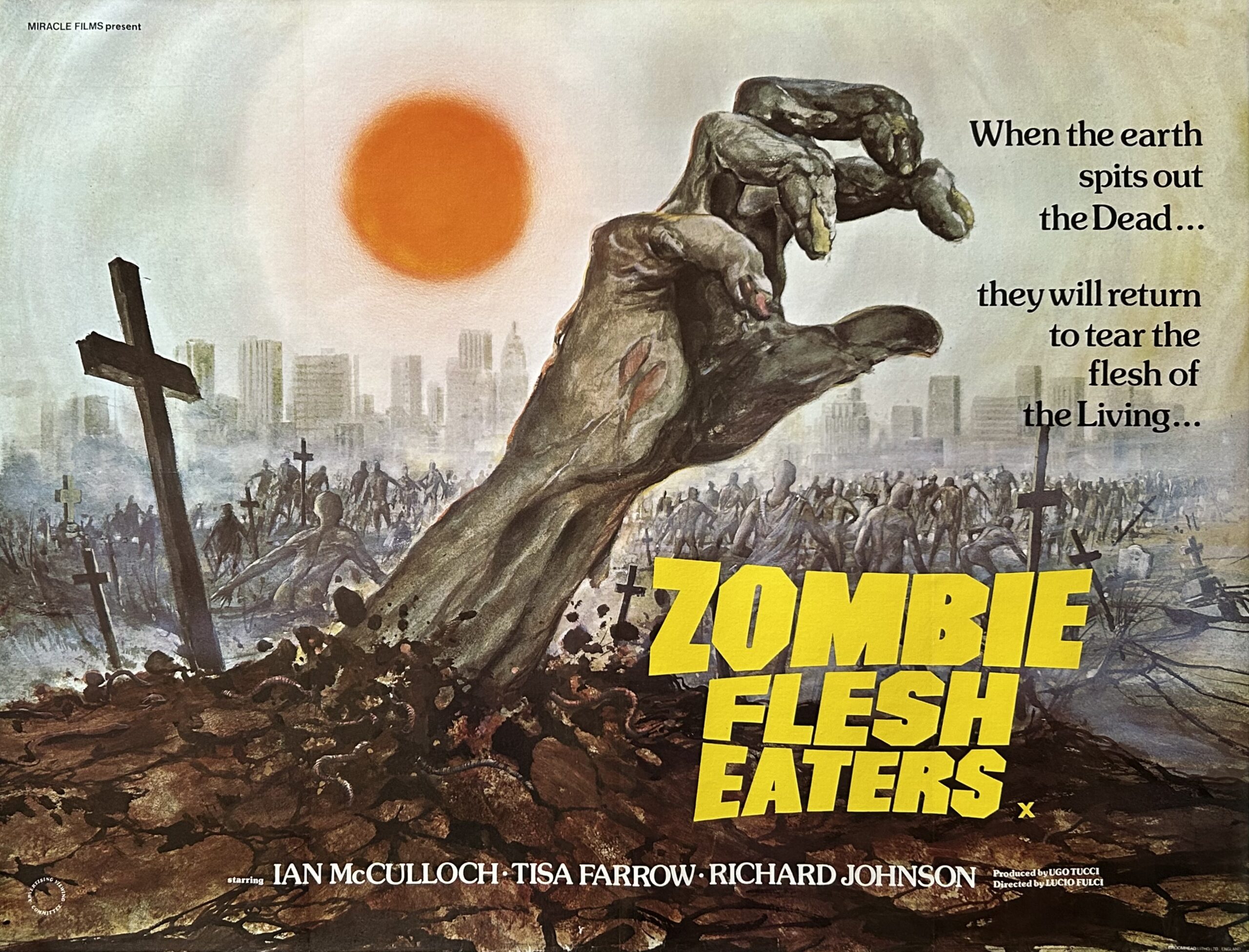
Confusion would forever reign as Zombi and Zombi 2 are the same film, but Zombi and Zombi are not. Some distributors thought they could clear this up by adding an E, removing the 2, and releasing it as Zombie in English-speaking countries, but this just made things worse because now we have Zombi, Zombi, Zombie, and Zombi 2, and now my head hurts and my nose is bleeding.
Then there were the countries that decided none of this worked, so Zombie was released with about fifteen different titles. Less than a year after Romero’s film was released, Lucio Fulci’s Zombie was unleashed on an unsuspecting public. While Dawn of the Dead featured extreme violence and the best makeup effects of its time, Zombie would go even further in its depictions of violence, dismemberment, and gore.
The first shot in the film is of a gun rising into frame to point at the camera, at us, before we see the intended target: a figure wrapped in a sheet, slowly sitting up on a bed. The gun fires, brain splatters, and the silhouetted gunman delivers that line about the boat leaving before the screen goes dark, and Fabio Frizzi’s masterful score accompanies the opening credits.
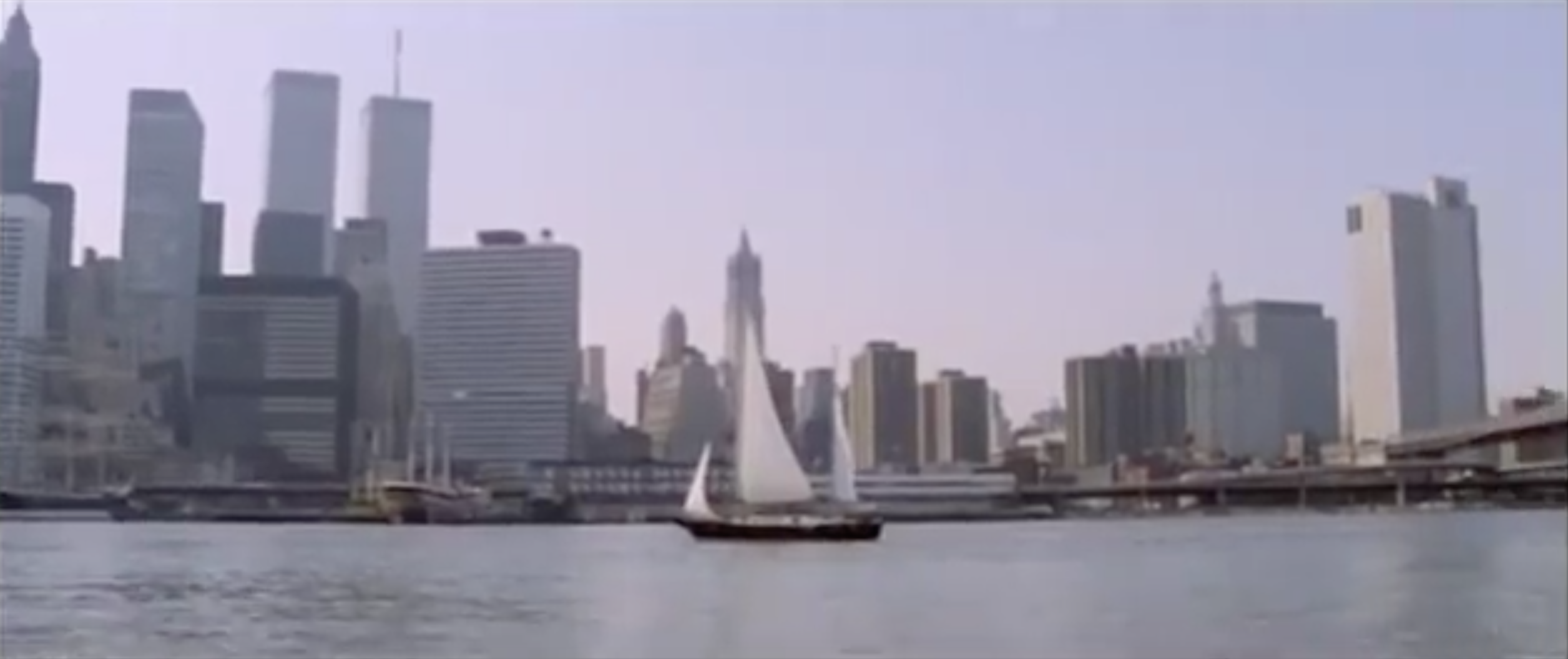
We then open in New York City as a boat drifts aimlessly about the harbor. When Harbor Patrol investigates, they find it abandoned. Almost. While an officer searches the lower decks, a zombie (Captain Haggerty) bursts through the door of the bow and chews his throat out. Fulci doesn’t just hold the shot of the sputtering neck wound, he zooms in on it, almost as if he’s challenging the audience to keep watching.
The zombie makes its way to the top deck, where it’s shot repeatedly before falling into the bay. The camera then pans upward to capture the cityscape, symbolizing that the boat, much like the Demeter in Dracula, has brought disease and death to the city.
The police interview Anne Bowles (Tisa Farrow), daughter of the boat’s owner, Dr. Bowles (Ugo Bologna), but she knows nothing. Across town, reporter Peter West (Ian McCulloch) is being assigned to the story by his editor (Lucio Fulci), before the film cuts to the coroner preparing to examine the body of the Harbor Patrol Officer and acting like a dick toward his co-worker, as the hand of the deceased officer twitches under the sheet…
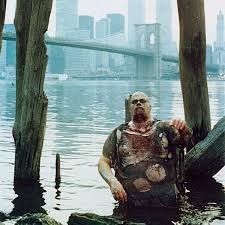
That evening, Ann sneaks onto the boat to look for clues. Peter has beaten her there, though, and they bicker a bit before Peter reveals that he found a letter from Ann’s father addressed to her. A cop hears them, but Peter has an idea. The cop goes below to find the two of them making out on the couch. Peter, you sly dog.
They get the boot, and off they go. The next morning, Peter is on the phone with his editor, reading Ann’s letter and asking to pursue the story to the island of Matul. The letter details a mysterious illness, one that Dr. Bowles knows he won’t survive. Then it’s to St. Thomas to try to find a boat to Matul.
A shifty cab driver takes them to see Brian (Al Cliver) and Susan (Auretta Gay), who are just about to head out on a little tour of the Caribbean. After some hand-wringing and talk of curses, Brian and Susan agree to give them a lift.
On Matul, Dr. Menard (Richard Johnson) is trying to get his hysterical wife (Olga Karlatos) to calm down. She’s drunk and afraid of the zombies, but he assures her they’re all the way on the other side of the island. When she refuses to think rationally, he slaps her around before leaving for the island hospital. Outside, he asks his trusty pal Miguel to keep an eye on her, so I’m sure she’ll be just fine.
At sea, Brian and Peter aren’t having much luck finding Matul. This worries Ann, but Peter promises her that they’ll look for as long as they have to. Brian is like: hey dickface, this is my boat, and me and my lady are on vacation!
That’s when Susan decides to don the scuba gear. She then does what women did in the 70s and takes off her top in front of everyone, much to the approval of Peter, then gears up and drops into the ocean. The moment she hits the water, the island of Matul is spied in the distance.
The scene that follows is so fucking great I can’t believe human beings created it.
Susan is in the water taking pictures when a shark approaches. Brian channels Captain Quint, crushes his Narragansett beer can, and grabs the M1 rifle, but it’s no use; the shark is going to attack.
That’s when the fuckin’ zombie shows up.
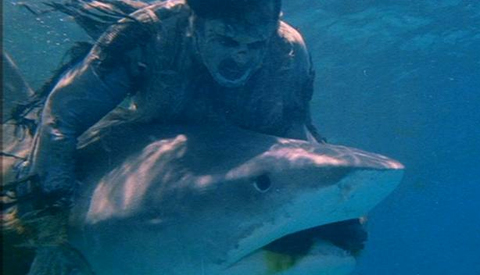
It grabs Susan, who escapes by using the old ‘coral to the eyes’ maneuver. Then, the shark spots the zombie, and sharks hate zombies. A fight for the ages ensues. The logistics of this scene are mind-boggling. A dude can only hold his breath for so long, so it had to take hours to film. Hours of a human being taunting a shark. Not just any shark, though, a tiger shark, a Goddamned maneater, and the stuntman is fucking with this thing.
At one point he even starts biting it. I half expected a scene in Fulci’s next movie to involve a guy walking up to a grizzly bear and pissing in its face while poking its cub in the eye, Moe Howard style. Whether it was a special effect or the shark got pissed is unknown, but it bites the zombie’s arm off and swims away. And to think of all the money Spielberg wasted on an animatronic shark because he was too gutless to even consider some bullshit like this.
They get Susan back on board, and in her terrified state, she tells them:
“There was a man down there!”
Dr. Menard is making the rounds at the church-turned-hospital, a place that looks so hot and filthy that you can smell it, when his helper Lucas (Dakar) bursts in and tells Doc that the terror-stricken villagers are fleeing into the jungle. They go outside where Lucas tells him that the local voodoo man:
“Is possessed by all the devils of hell!”
The doctor scoffs at the notion of voodoo.
As night falls, Miguel is keeping watch outside of the Menard house, but he hears a noise, so he and his dog take off. Cowardly bastard doesn’t even try to warn Mrs. Menard. We get another topless shot before she showers, and a rotten zombie hand claws at the window.
And now for the 2nd scene that this movie is famous for.
As she dries off, she hears a noise and sees a figure at the window. As quickly as she shuts the bedroom door, something starts pushing it open. The way Fulci shoots this scene is masterful, focusing on a widening beam of light on the wall as the door is pushed further open. She somehow manages to get the door closed and pushes a bureau in front of it as a barricade.
She relaxes for a second, and we think she’ll be alright, but the zombie punches through the door and grabs her by the hair, pulling her toward the opening.
Fulci trains the camera on a huge splinter; then, he cuts to Mrs. Menard’s eye. It’s excruciatingly drawn out as her eye draws closer to the splinter, and if you think Fulci is going to spare us, you don’t know Lucio Fulci; that guy fucking hated eyeballs.
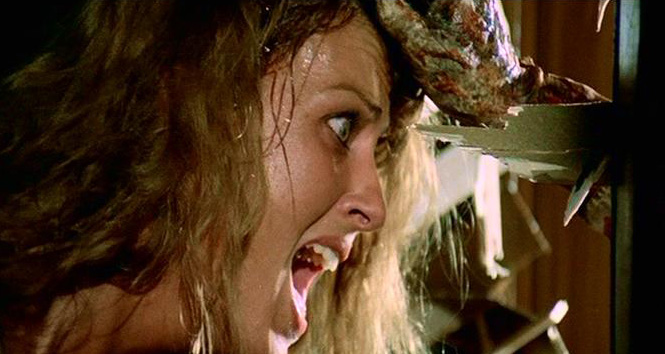
He gets the camera in there nice and close as the splinter pierces her eye. She shrieks as it plunges deeper into her skull before snapping off, and the zombie drags her through the opening. It’s pretty badass.
The next morning, Brian is assessing the damage that bastard shark did to his boat, presumably after telling Peter he saw one eat a rocking chair once. The diagnosis is not good; the drive shaft is busted. Luckily for them, they’re only fifty yards away from the shores of Matul…
On the beach, a shitfaced Dr. Menard receives news from Nurse Clara (Stefania D’Amario) that another assistant has been bitten. Menard goes to the hospital to help him, but he knows it’s a death sentence. As Menard and Clara dump bodies into a mass grave. Lucas arrives to tell them he saw emergency flares launched from Catfish Bay.
Inside the hospital, in a scene that chills the blood, a deathly ill woman with mucus all over her face wails:
“Manuela! Manuela, I see you! I bury you… but I see you walking!”
Fulci’s gift for visual storytelling impresses here, as the scene cuts to the road leading into the village with a zombie in the distance, symbolizing the undead threat that is slowly making its way toward the most populated area of the island.
After rescuing our stranded heroes, Menard explains how Ann’s father contracted and then succumbed to the disease ravaging Matul, and we learn that the body in the sheet at the start of the film was Ann’s father. The acting by Johnson here is spectacular. When asked to elaborate further, Menard responds:
“Have you ever heard of voodoo?”
Brian has, and he’s nice enough to give the audience a detailed definition before dismissing it as:
“Superstitious horseshit.”
Menard isn’t so certain anymore:
“Whatever it is, it makes the dead get up and walk. I’ve seen it with my own eyes.”
When Peter expresses disbelief, we realize that Menard has been driven almost to madness in his attempts to use science to solve something that science will never grasp.
When they arrive at the hospital, Lucas greets them with bad news: Fritz, the only other white man on Matul, had an “accident.” Menard asks our protagonists if they would be so kind as to take the vehicle and check on his wife, then heads in to check on poor Fritz. Fritz tells him it was one of the living dead, and then Menard asks where it happened. When Fritz tells him it was in the village, we get another powerhouse performance from Johnson as the gravity of the situation sinks in, and his face drops:
“In THIS village?!”
He has Lucas lock all the doors, then Fulci hard cuts to that lone zombie we saw earlier, only now it’s a closeup of its mangled face. The shit is hitting the fan.
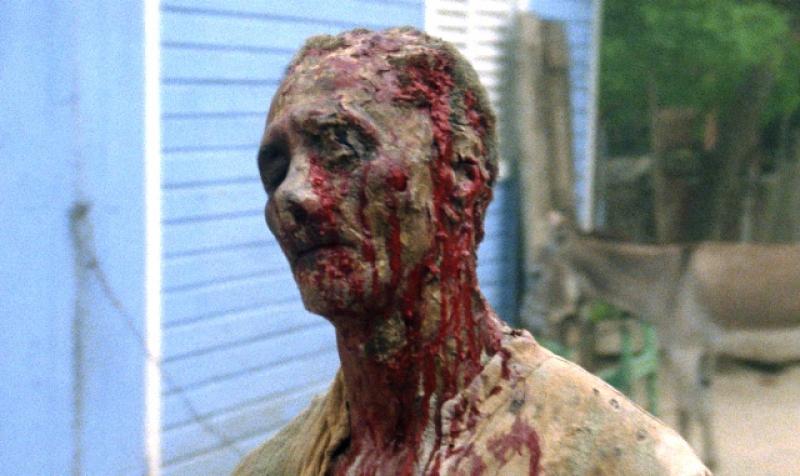
The Dead Walk
When Peter and the gang arrive at Menard’s house, it appears to be deserted, and calls to Mrs. Menard go unanswered.
Then, they find the aftermath.
It’s a gore-soaked buffet as zombies sit around Mrs. Menard’s corpse and casually stuff organs and chunks of flesh into their faces. One of her legs is gone, her severed hand is sitting off to the side, and her abdominal cavity is an open bowl of grue. It’s fuckin’ gross.
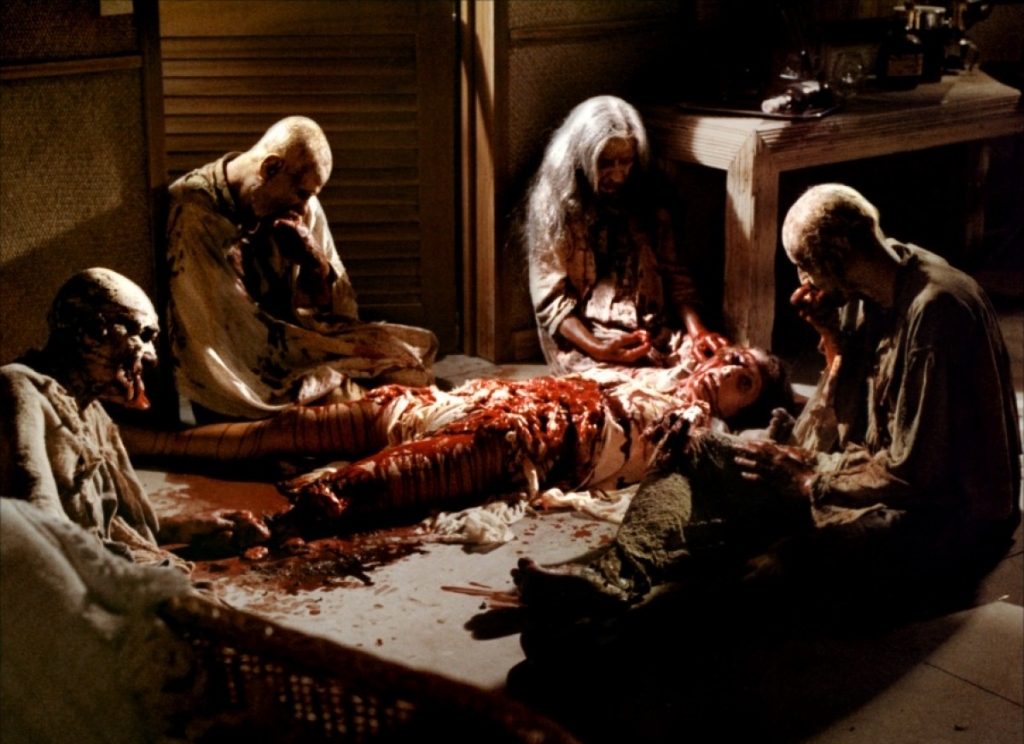
They speed back to the hospital, but due to a lack of ‘zombie crossing’ signs, the vehicle gets wrecked, and Peter breaks an ankle. They go for it on foot as the voodoo drums get louder, nearly driving Susan to the breaking point. The atmosphere is incredible, as only Fulci could make a sunny beach seem absolutely terrifying.
At the hospital, Menard asks Lucas point blank:
“Is voodoo to blame for all this?”
Lucas claims to know nothing, but he shares a story his grandfather used to tell about the earth spitting out the dead. Menard dismisses it, and Lucas delivers the best lines in the film:
“You are right, doctor. You know many more things than Lucas.”
“I don’t believe that voodoo can bring the dead to life!”
“And Lucas don’t believe, that the dead… Be dead.”
In the jungle, Peter has to rest his foot for a minute. While looking around, Brian discovers an old Conquistador helmet and realizes they are in a cemetery. Sacchetti and Briganti, having done their homework, mention Conquistadors several times in the script, giving us a theme and possibly a ‘why.’
Tales of the brutality wrought by these ancient explorers have been passed down, and the return of white men all these centuries later spurred the native elders to employ voodoo as a weapon against these new invaders. This is why the drums and chants grew louder after Brian’s boat, a vessel carrying more white people, arrived.
Little could these voodoo priests know how much larger and more connected the world had become since the Conquistadors.
With Brian and Susan distracted, Peter and Ann decide that hiding from zombies in a cemetery is the perfect place to make out. They’re interrupted, however, when a hand rises from the earth and grabs Ann by the hair and another grabs Peter’s broken ankle.
Brian runs to the rescue, but Susan is paralyzed with fear as the worm-eye zombie (Ottaviano Dell’Acqua) rises from an absurdly shallow grave and gnaws out her jugular. Fulci once again stays on a gurgling throat wound as she falls to the ground. After dispatching the zombies, they escape and flee to the hospital. A fantastic sequence follows as the graves open and dozens of dusty, ancient corpses rise.
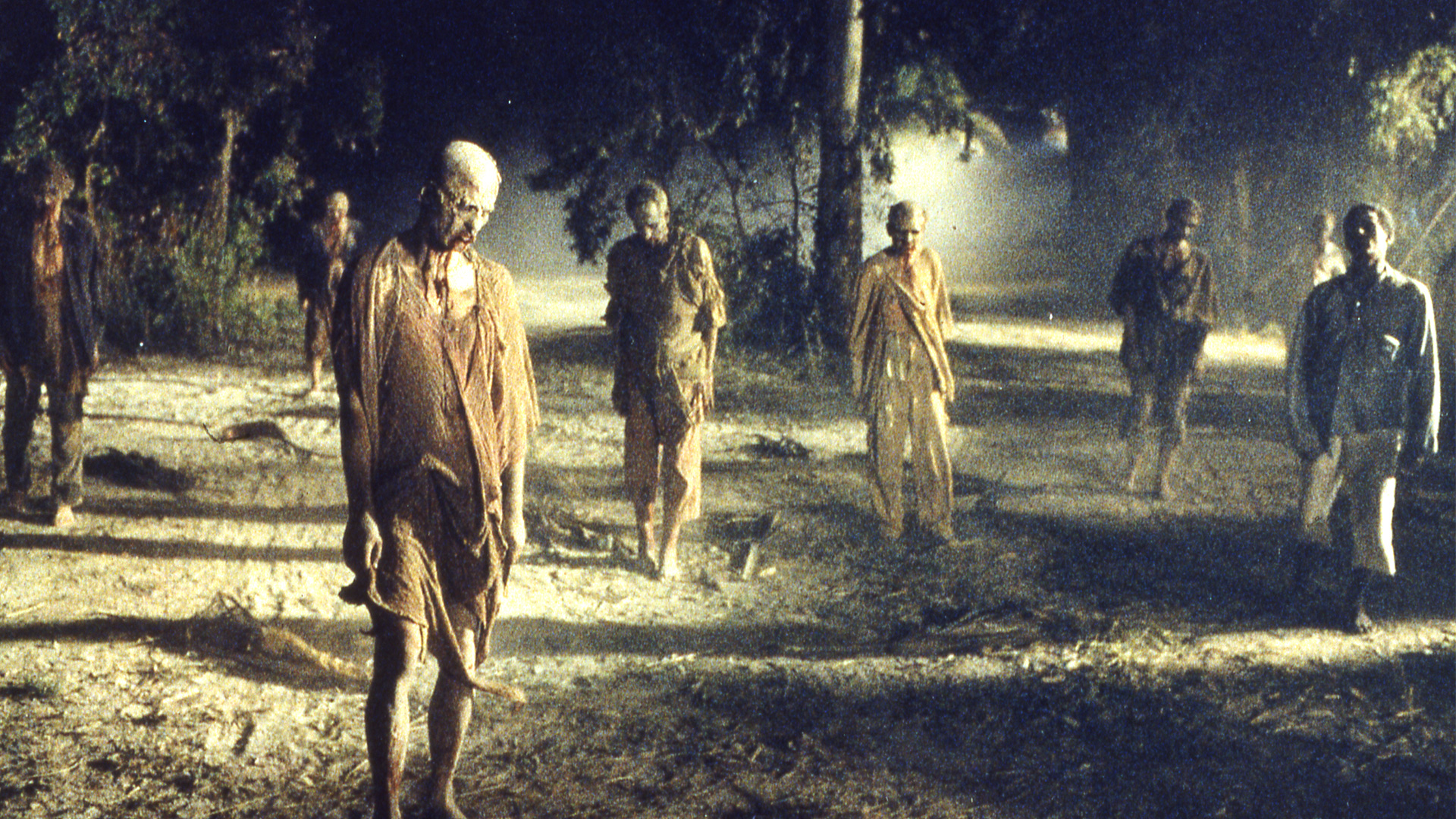
They make it to the hospital as night falls, and Fulci again achieves perfection with a shot of dozens of zombies shambling through the foggy forest toward the hospital. Menard opens the door to Peter’s exclamation:
“Out there! They’re coming back to life! THEY’RE EVERYWHERE!”
They barricade the windows, bar the doors, and fashion Molotov cocktails for the final showdown as Menard tends to Peter’s ankle and learns of his wife’s fate. As the zombies start beating on the doors, the last patients die and return to life. Menard goes for another gun, but zombie Fritz bites off his face.
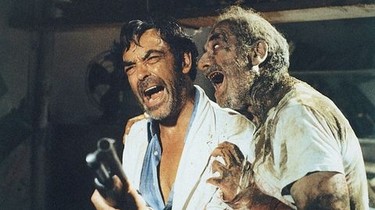
Brian kills Fritz as another zombie patient gets Lucas, who immediately zombifies and kills Clara. The only ones left are Brian, Peter, and Ann, and they’re ready to kick some ass. The doors give way, Frizzi’s main theme starts pounding, and mayhem ensues as they blow off heads and toss Molotov cocktails, creating an inferno within seconds.
They escape out the back as the zombies burn, but zombie Susan bites Brian. Peter blasts her, and they head for the boat. Brian dies the next morning, and the decision is made to lock him up so they have proof of their story. Thinking music will lift their spirits, Peter turns on the radio. But instead of music, it’s a broadcast about the dead taking over New York City. Brian starts beating on the door, and we see the Brooklyn Bridge being overrun by the dead.
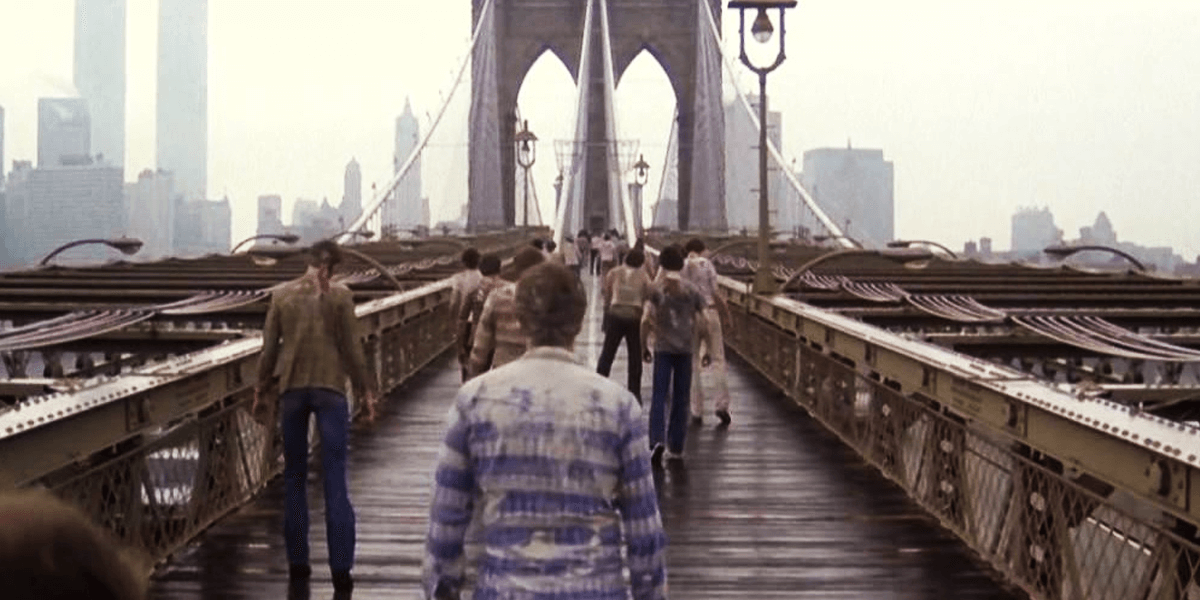
The radio DJ screams as zombies break into the station.
Roll Credits
Zombie was released on August 25th, 1979, and cinema changed overnight. When the dust settled, Zombie grossed a whopping $30M against a budget of $420K. It then tore it up on home video, no doubt spurred by the iconic “worm eye zombie” on the VHS box with that ingenious tagline:
“We are going to eat you.”
Fulci was back, receiving countless offers to direct and taking the title “Godfather of Gore” from Hershel Gordon Lewis, as the films he would make after Zombie would go on to define his entire career and bring him international fame.
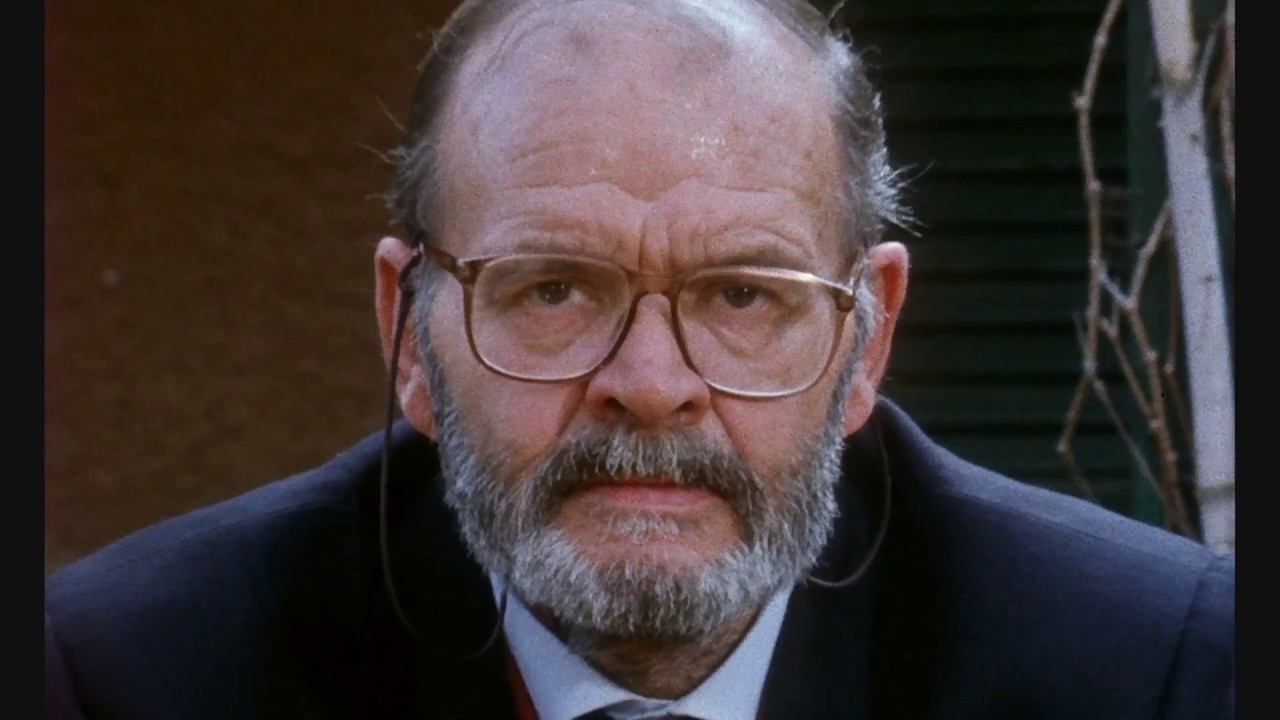
Italian producers realized that low-budget films could make a killing internationally, and this influx of cash provided a much-needed shot in the arm, delaying the collapse of the Italian film industry for another ten years or so. The Italian horror boom had begun, and in less than six months, the international film market was bursting at the seams with Italian horror; most great, some not so much, but damn near every one of them entertaining as hell.
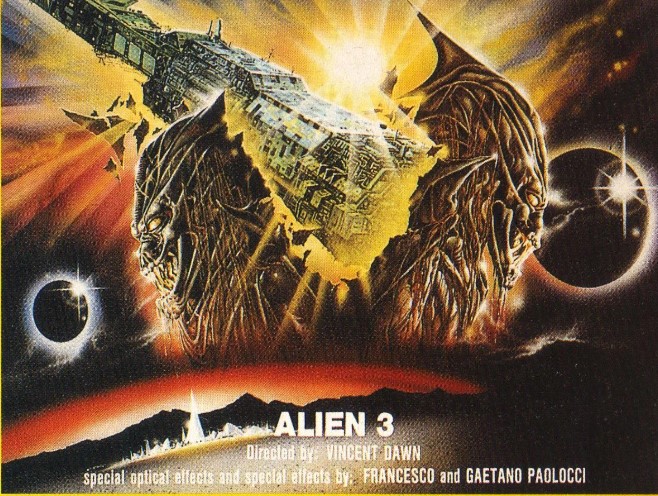
This leads us to another byproduct of the film’s success: the “Italian Knockoff.” If an American genre film made money, the Italians were stealing the idea and wiping their asses with American copyright law. For every Alien, Rambo, and Raiders of The Lost Ark, there would be five Italian movies with the exact same plot.
Hell, the number of Italian Jaws ripoffs alone is nearly in the teens. This trend would continue throughout the 80s before finally fizzling out around 1990, but it gave us some of the best films ever made, some even better than the American originals.
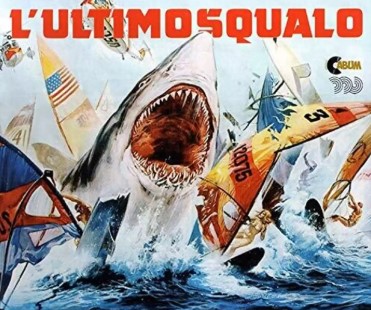
Yes, it can be argued that it was Dawn of The Dead, not Zombie, that ushered in this new era. But while Romero’s film might be more well-known today, Zombie outperformed Dawn at the box office in every country except America. As for immediate influence; after the release of Dawn, there wasn’t a single decent zombie film produced in America until 1985, when we were gifted with Day of the Dead and Return of The Living Dead.
Yet the number of zombie films produced in Italy reached double digits during that same period. And, like Burial Ground, Hell of The Living Dead, and Nightmare City, 90% of them are fucking spectacular. To illustrate how far-reaching the film was, I have a family member, let’s call him Scooty McNitro, who is from Western Pennsylvania and is not a horror fan. He has never seen Dawn of the Dead. But in the early 80s, he did see Zombie at the drive-in.
It wasn’t just profit and influence, however: Sacchetti and Fulci had things to say. Romero may have ingeniously wagged his finger at rampant American consumerism, but Fulci and Sacchetti wanted us to see what unchecked hubris and a “science will resolve it all” attitude can do when man is faced with events that are beyond his ability to comprehend.
They wanted us to see that sometimes, technology and progress can cause more harm than good when it dictates that something is impossible, even when we’re looking right at it. And… that it’s pretty fuckin’ awesome to watch a zombie fight a shark.
In doing so, they started a cinematic revolution and showed us that if the shit hits the fan, you might have to put away the microscope, wrap the dead bodies in sheets, and shoot them in the head before dumping them in a mass grave.
10 splinters to the eye out of 10


